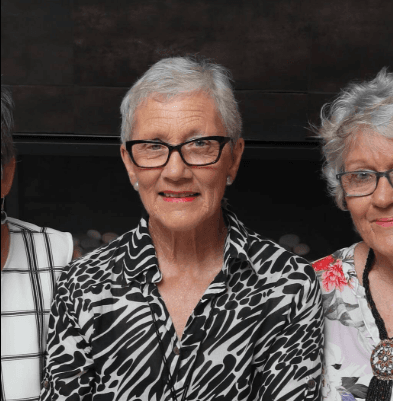How Stacy Caprio Used Digital Asset Acquisitions to Build Financial Freedom

Business Description
Table of Contents
Navigate through the case study sections
Executive Summary
Case Study Content
Building Financial Freedom: Stacy Caprio's Journey from Digital Assets to Real Estate
For years, Stacy Caprio commuted from her home in Chicago to an office, relying on lunch break walks as her only escape. No matter how hard she worked, Stacy felt the frustration that grips so many: effort didn't translate to real reward. "Your salary doesn't double when your output does, " Stacy noted. "You feel trapped, even giving your best. I hit a wall, constantly thinking: what else could I do that's not this?"
Breaking Out of the 9-to-5: Discovery Through Digital Asset Investing
Motivated by dissatisfaction and searching for alternatives, Stacy began reading income reports and stories of people making money online. Inspired, she started experimenting with buying small, revenue-generating websites via Flippa. This wasn't immediate success: there were plenty of failed bets and learning moments. But over time, Stacy found a method that worked. By purchasing established content sites, she skipped the painful early phase of starting from zero and instead optimized, grew, or maintained these assets for recurring income streams.
With every successful acquisition, Stacy gained not just cash flow, but more freedom. Her "workday" no longer belonged to an employer, it belonged to her. Mornings might start in her light-filled condo or in her building's common area overlooking Austin's skyline, espresso in hand. "Flippa enabled me to have control over my time, " Stacy reflected. That flexibility was more important than just money, it was about regaining agency over her life.
Living On Her Own Terms: The Everyday Rewards
In place of scheduled lunch breaks, now there are mid-morning runs or spontaneous walks. Stacy chooses her work environment and pace. And she sets the strategies for her investments, no higher-ups, no glass ceilings, just her own decisions. She thrives on seeing effort lead directly to results, and she makes no bones about what motivates her: "For me, money is actually a big motivator. But it's more about the financial freedom it brings."
Expanding Portfolios: From Digital Real Estate to Brick-and-Mortar
Armed with recurring income from her websites, Stacy expanded her vision beyond the digital world. Today, she's a certified realtor, investing the profits from her digital assets portfolio into physical real estate. Recently, she closed on expired domains and real estate-related websites while also buying duplexes near Austin. "I'm using all my profits from my Flippa sites to buy two duplexes, " she explains. Digital businesses, she realized, bring high returns but can be volatile, balancing those risks with steady, inflation-resistant assets like real estate is key.
Stacy now stands as proof that a well-managed online business portfolio can be a launchpad into traditional investing. And she's quick to point out: diversification matters. "Websites can be volatile even though the returns are high, " Stacy notes. "It's good to have a split: online, but also physical. You don't want inflation eating up everything."
Facing Gender Gaps: Winning Confidence in a Male-Dominated Space
Business ownership isn't always smooth, especially for women in fields like investing and online entrepreneurship that have long been dominated by men. Multiple studies show women regularly report less confidence in the workplace, mainly due to lack of support, networks, and growth opportunities. Stacy recognizes the reality: "When I worked in online marketing, women often hesitated to push their own ideas, even if they were just as capable."
Her answer? Begin, even if it feels risky. Reading other women's success stories gave Stacy the final push to try acquisition entrepreneurship. She believes that seeing relatable examples is critical for confidence. "I was inspired by other people. I wouldn't have tried if I hadn't seen others succeed." Stacy's entrepreneurial spirit had roots, too: as a child, she ran lemonade stands and swim lesson businesses, while her family members found their own ways in sales and consulting.
Words of Advice: Setting and Chasing Achievable Goals
Stacy's advice rings clear: "Decide what your end goal is, write it down, and make a plan that works backwards. Use case studies from others to understand what you need to do daily. But take action, dreams don't work unless you do." She stresses the value of daily, repeatable steps and keeping the goal in focus. Consistency and execution are the dividing lines between those who make it and those who don't.
Building Her.CEO: Sharing Knowledge and Supporting Others
Through her platform Her.CEO, Stacy shares her journey, lessons, and strategies, making it accessible for other women aiming for financial freedom through online business and investment. She runs a podcast, publishes articles on money-making strategies, and creates a community where female entrepreneurs can learn from one another's wins and mistakes.
Every year, through events like "Her Future, " she encourages more women to break free, providing practical resources and a network that builds confidence via connection. The movement goes beyond profits: it's about shifting mindsets, breaking down traditional gender barriers, and showing what's possible when you own your time and your work.
Portfolio Diversification Made Real
By starting with digital content businesses and later acquiring real estate, Stacy Caprio demonstrates a roadmap for self-sufficiency that doesn't require building a startup from scratch. Instead, she profits from existing revenue streams, optimizes for growth, and translates digital wins into durable, inflation-resistant wealth. Her story is now a guide: test, grow, diversify, and always keep learning.
- Start by learning from others and experimenting with small, manageable online acquisitions.
- Prioritize flexibility and freedom in your business choices, not just the money.
- Set direct, daily goals tied to a clear overall plan.
- Diversify from digital into physical assets when possible to manage risk.
- Encourage and support new entrants, especially women, to build a more inclusive marketplace.
Conclusion: Financial Freedom, One Step at a Time
Stacy Caprio’s story is not about sudden overnight success, but about building autonomy step by step: trading corporate burnout for purpose, adapting strategy, and building wealth that actually supports her lifestyle. Whether you're stuck in a cubicle or looking for your next act, her playbook is simple: act, learn, diversify, and support others along the way. Don’t wait for permission, start owning your outcomes now.
Key Takeaways
- 1Stacy Caprio leverages Flippa to buy and operate profitable content websites, generating consistent online revenue.
- 2She transitioned from a restrictive office job to a self-directed lifestyle with full control of her time and income.
- 3Profits from her digital portfolio enabled her to invest in real estate, demonstrating the power of diversification.
- 4Stacy stresses the importance of clear goals, daily action, and learning from the successful paths of others.
- 5Confidence is essential; seeing other women succeed was key in inspiring her to take the plunge into entrepreneurship.
- 6Through Her.CEO, Stacy shares strategies and supports women pursuing autonomy through business ownership.
Tools & Technologies Used
Premium Content Locked
Subscribe to access the tools and technologies used in this case study.
Unlock NowHow to Replicate This Success
Premium Content Locked
Subscribe to access the step-by-step replication guide for this case study.
Unlock NowInterested in Being Featured?
Share your success story with our community of entrepreneurs.
Explore More Case Studies
Discover other inspiring business success stories

AdHive's $191K Profit with Facebook Ads
AdHive Media Buying Team tapped into consumer demand for dietary sweets in France, Germany, and the US. By running direc...
AdHive Media Buying Team

From Cancer Survivor to $533K Ecommerce Exit: How Jill Tucker Built and Sold Erilan
Jill Tucker founded Erilan in Wagga Wagga, Australia after her own breast cancer experience left her searching for bette...
Erilan

Bootstrapped IT Automation Firm Hits $40K/Month
Cerum Solutions began as a no-code experiment on Bubble.io but soon shifted to practical automations, setting up Salesfo...
Cerum Solutions
